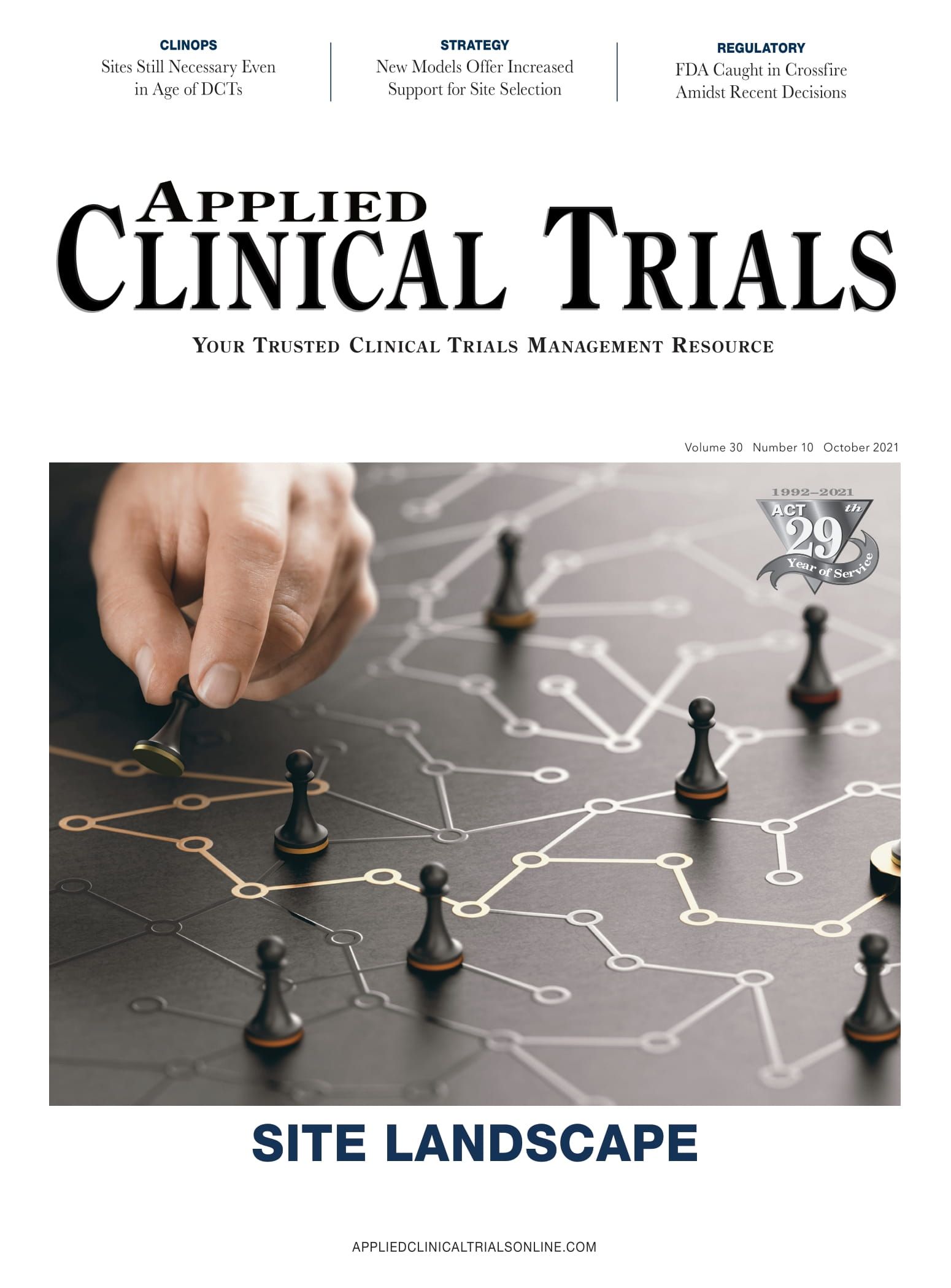Utilization of EMS Data in Site Selection
InterveXion CEO Keith Ward and Andrew Schafer, vice president of strategy for Biospatial discuss the details of a study which utilizes EMS data to identify sites for a Phase II clinical trial.

Clinical stage biopharma InterveXion Therapeutics is developing novel products for the treatment of addiction disorders. In this infographic, the outline of how the company used Emergency Medical Services (EMS) data to identify sites for a Phase II clinical trial. In this Q&A, InterveXion CEO Keith Ward and Andrew Schafer, vice president of strategy for Biospatial discuss the details of this study.
Applied Clinical Trials: This is an interesting case study. How did the three
companies—InterveXion, Syneos Health, and Biospatial—come together?
Keith Ward: InterveXion had contracted with Syneos Health to support our Phase II study for acute methamphetamine intoxication (Meth-OD) and we thought site selection might be especially difficult for this trial. Syneos Health was already working with Biospatial, and they suggested the Biospatial data might be a good way to identify sites. We looked into it, and it fit our needs, the data were coming in near real-time and that was important for us because a lot of the epidemiology data we could find were out of date and were not compiled nationally using similar collection methods.
Andrew Schafer: All three companies working together was a great experience. Biospatial was able to help InterveXion, not only identify high-prevalence sites, but we were able to provide demographic information on potential patient pools to help ensure a diverse patient population for the study.
ACT: Applied Clinical Trials has covered the clinical development industry for a long time, and we have never heard of using EMS data. Where does it come from and how is it being used?
Schafer: As we continue to talk with pharmaceutical companies, CROs, patient recruitment companies, hospitals, and substance abuse centers, we hear the same thing: “I had no idea these data existed.” Biospatial has spent years signing data use agreements with EMS offices at the state level, which allows us to access EMS ePCR (electronic Patient Care Report) data. Think of our data products as EMR-like for an ambulance transport and it comes to us in near real-time, making it especially valuable for studies where patient consent needs to occur in a short timeframe—for example, with stroke, cardiovascular events or trauma—or where healthcare trends change quickly, such as drug use or overdose, COVID-19 infections or other infectious diseases.
Ward:We had the same thoughts as well. In our case, we were doing our first study in an emergency medicine setting, so we were delighted to have such an on-target dataset. After diving into the platform, we found it easy to navigate and could use our inclusion/exclusion criteria to help refine our site selection search. The data elements contained in the data set were quite robust.
ACT: How was the ePCR data used specifically for this clinical study?
Schafer: As Keith mentioned, we were able to take the study characteristics and the inclusion/exclusion criteria and develop a search of which hospitals have access to the patient population. After that list of approximately 200 was created, we overlayed patient demographic information to help provide a diverse set of sites for InterveXion to consider.
ACT: What were the results and any next steps?
Ward: We’re still a little early to have hard enrollment results as some of the sites are in the process of being initiated. In our early going, however, the patient flow we are seeing definitely matches our expectations based on the Biospatial data. So far, we are happy with the process and the outcomes as we continue to track potential patient volume at each site. We are also currently considering using Biospatial’s ability to notify the project manager and site coordinators, via text and email, as to when a potential patient has entered the hospital.

Patient and Site Personnel Perceptions of Retail Pharmacy Involvement in Clinical Research
March 7th 2024Despite industry-wide excitement over the involvement of retail pharmacies in clinical research, there is little information currently available on how retail pharmacies are perceived by investigative sites and patients.